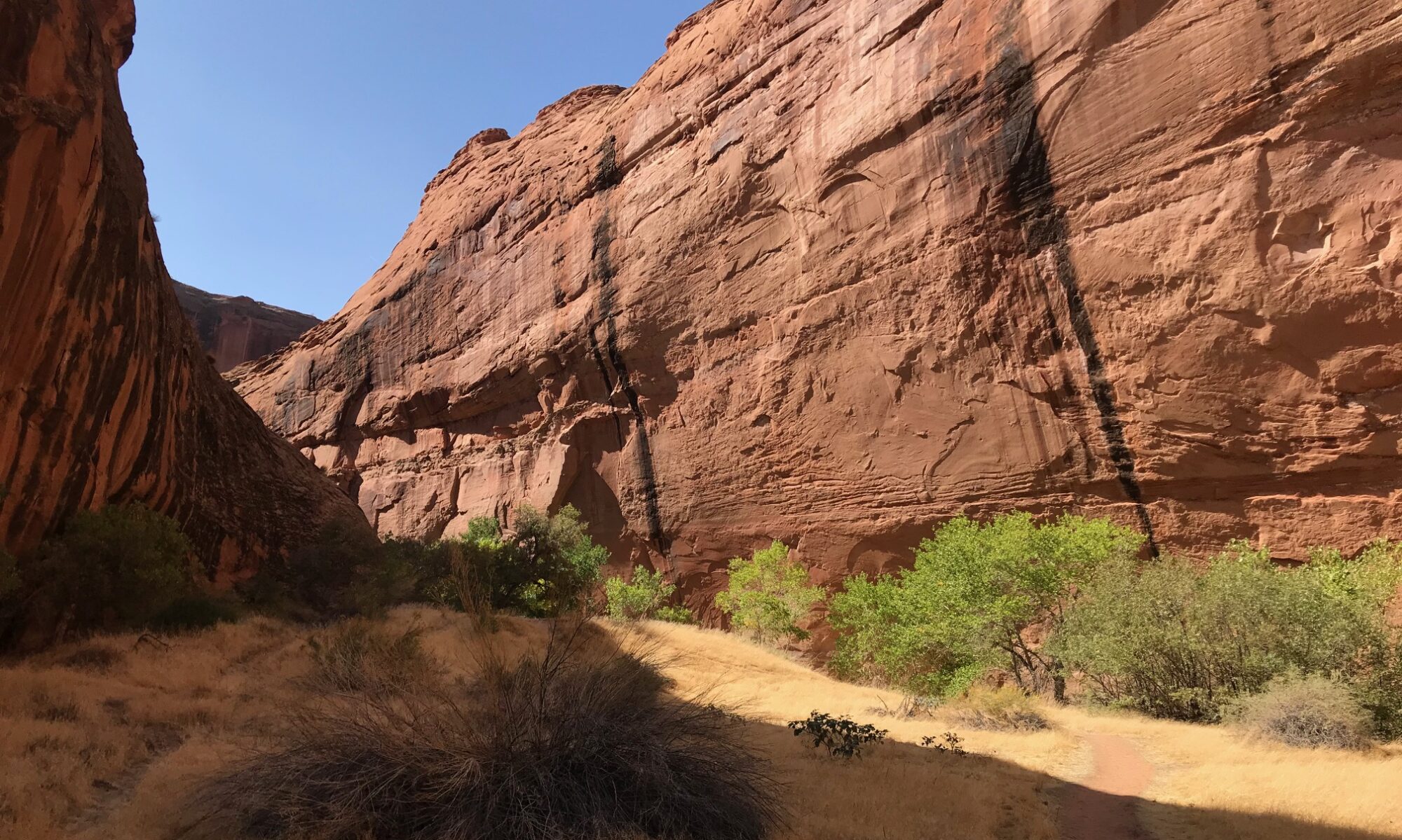By Theo Coxe of Eugene, Oregon
My first experience with Southern Utah began in 1984 as I bicycled over Soldier Summit in a July snowstorm, en route from Seattle to Santa Fe. A day later, I pedaled up to the Arches Campground in 100 degree heat, where I spent the day reading Edward Abbey’s Monkey Wrench Gang in the shade of a Juniper tree. I fell in love with the vastness of the skies, the color of the rocks and even the stifling heat.
Five years later, when the school where I worked in Seattle expanded its outdoor education program, I helped develop and run a program that took middle school children to Bryce Canyon, Zion, and Canyonlands National Parks, and to other public lands and State Parks. We studied geology, climate and weather, ancient cultures, current issues, water use, leave no trace wilderness travel, leadership skills and geology among other subjects, in the richest classroom in the world.
Twenty-three times between 1989 and my retirement in 2017, I was able to experience the wonder of Weeping Rock through new eyes with yet another group of students, and each year, they amazed me with their insight, their artwork, the essays and poetry they wrote, their ability to adjust to life where we had to be mindful of the other beings who relied on the spring from which we drew our water.
Some 250 students took part in our Southwest program and many, citing their experiences in Utah, have gone into outdoor leadership, wilderness medicine, environmental sciences and other educational fields. I am thankful that I had the opportunity to use my position as an educator to help students find ways to make the world a better place.
I am the teacher of athletes,
He that by me spreads a wider breast than my own, proves the width of my own,
He most honors my style who learns under it to destroy the teacher.
-Walt Whitman, Leaves of Grass



